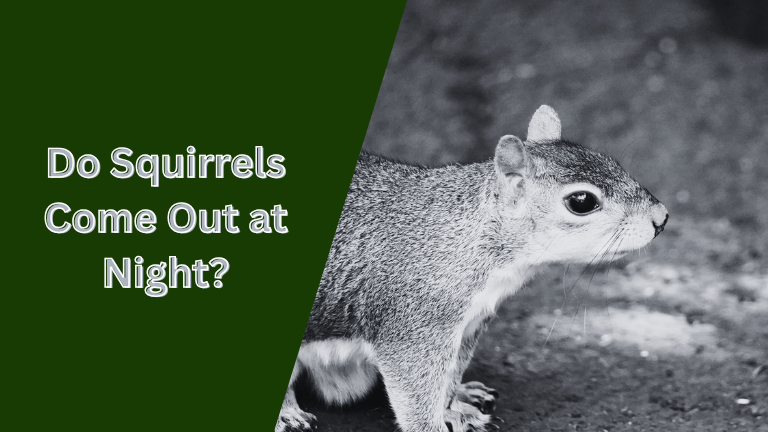Squirrels are commonly observed during daylight hours, leading many to wonder about their nocturnal habits. Understanding their activity patterns is essential for wildlife enthusiasts and homeowners alike.
Most squirrel species are diurnal, meaning they are active during the day and rest at night. However, some species, like flying squirrels, are nocturnal and are active after sunset.
In this article, we’ll explore the activity patterns of various squirrel species, reasons behind their nocturnal behaviors, and what to expect if you encounter a squirrel at night.
Diurnal vs. Nocturnal Squirrels

Squirrels can be broadly categorized based on their activity patterns:
- Diurnal Squirrels: These include species like the Eastern Gray Squirrel and Fox Squirrel, which are active during the day and rest at night.
- Nocturnal Squirrels: Flying squirrels, such as the Northern Flying Squirrel, are active at night and rest during the day.
Why Are Some Squirrels Nocturnal?
The nocturnal behavior of certain squirrel species, particularly flying squirrels, can be attributed to:
- Predator Avoidance: Being active at night helps them avoid diurnal predators.
- Foraging Efficiency: Nighttime activity allows access to food sources with less competition.
- Adaptation: Over time, these squirrels have evolved to thrive in nocturnal environments.
Occasional Nighttime Activity in Diurnal Squirrels
While diurnal squirrels are primarily active during the day, there are rare instances where they may be active at night:
- Disturbances: Loud noises or threats may cause them to move during nighttime.
- Displacement: Loss of habitat or nesting sites can force them to seek shelter at unusual hours.
- Unusual Behavior: Some observations suggest that diurnal squirrels might occasionally be active at night, though this is not common.
Identifying Nocturnal Squirrel Activity
Signs of nocturnal squirrel activity include:
- Sounds: Scratching or scurrying noises in attics or walls during the night.
- Droppings: Finding squirrel droppings in areas not typically accessed during the day.
- Visual Sightings: Observing squirrels active after sunset, especially flying squirrels gliding between trees.
1. Are all squirrels diurnal?
No, while most are diurnal, flying squirrels are nocturnal.
2. Can diurnal squirrels adapt to nocturnal activity?
Generally, no. Their physiology and behavior are optimized for daytime activity.
3. What should I do if I hear noises at night?
Investigate the source carefully; it could be nocturnal animals like flying squirrels or other wildlife.
4. Do flying squirrels pose a threat to homes?
They can enter attics or walls, causing damage. It’s advisable to secure potential entry points.
5. How can I differentiate between diurnal and nocturnal squirrels?
Observing their activity times and physical characteristics, like the presence of a gliding membrane in flying squirrels, can help.
Conclusion
Understanding the activity patterns of squirrels is crucial for coexisting peacefully with these creatures. While most squirrels are active during the day, some, like flying squirrels, are nocturnal. Recognizing these patterns can aid in identifying and managing any potential issues related to squirrel activity around your home.
